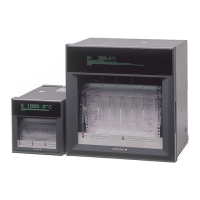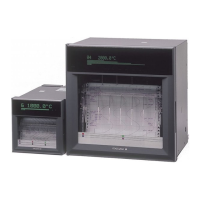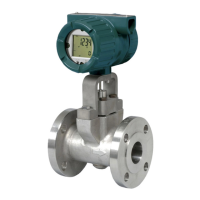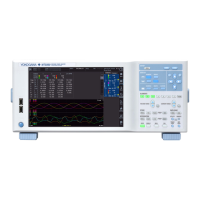39IM 04P01B01-02E
Finishing the Settings
10.
When Setting complete screen is displayed, do either of the following:
Press the
key to set other alarms.
To finish setting the alarm, press the ESC key.
02-02 CH/level 1
Setting complete
11.
Hold down the
MENU
key for 3 seconds to return to Operation mode.
Explanation
In step 7, you can select an alarm type on the table below.
Type Description
H High Limit Alarm: An alarm occurs when the input value exceeds the alarm value.
L Low Limit Alarm: An alarm occurs when the input value falls below the alarm value.
h Difference High Limit Alarm*: An alarm occurs when the difference in the input values of
two channels is greater than or equal to the specified value.
l Difference Low Limit Alarm*: An alarm occurs when the difference in the input values of
two channels is less than or equal to the specified value.
R High Limit on Rate-of-Change Alarm**: The rate-of-change of the measured values is
checked over a certain time (interval). An alarm occurs if the rate-of-change of the
measured value in the rising direction is greater than or equal to the specified value.
r Low Limit on Rate-of-Change Alarm**: The rate-of-change of the measured values is
checked over a certain time (interval). An alarm occurs if the rate-of-change of the
measured value in the falling direction is greater than or equal to the specified value.
T Delay High Limit Alarm***: An alarm occurs when the measured value remains above
the alarm value for a specified time period (alarm delay period).
t Delay Low Limit Alarm***: An alarm occurs when the measured value remains below
the alarm value for a specified time period (alarm delay period).
* Can be specified on channels set to delta computation.
** You must set the interval in Basic Setting mode.
*** You can select T or t when the alarm delay function is enabled in Basic Setting mode.
Setting the Input Range and Alarm on Measurement Channels

